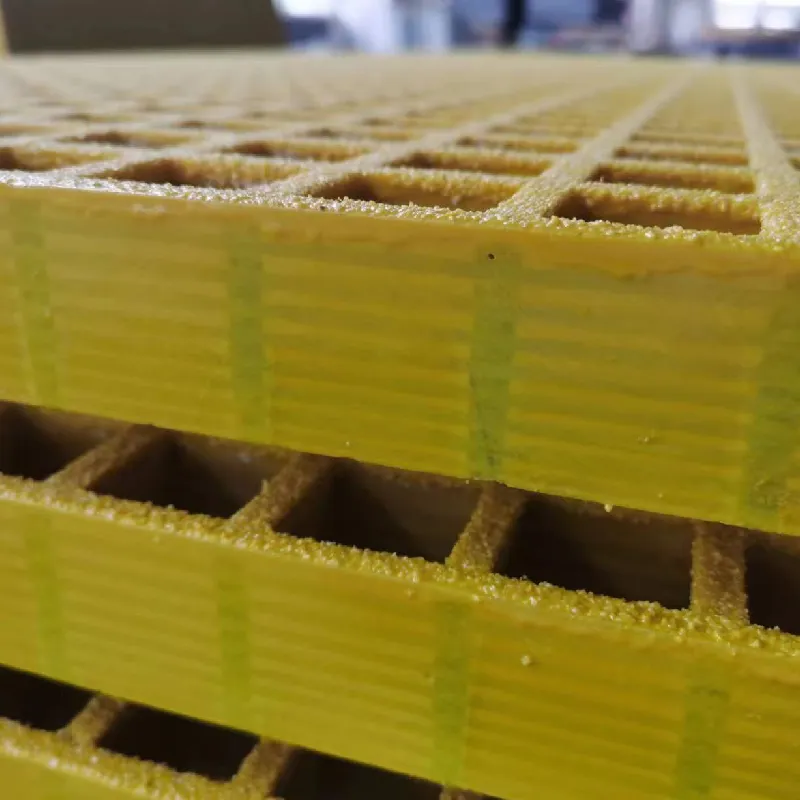loading...
- No. 9, Xingyuan South Street, Dongwaihuan Road, Zaoqiang County, Hengshui, Hebei, China
- admin@zjcomposites.com
- +86 15097380338
- Welcome to visit our website!
frp railing systems
The Advantages of FRP Railing Systems
Fiber Reinforced Polymer (FRP) railing systems have gained significant traction for use in various construction and infrastructural applications. These materials combine the reinforcing properties of fibers, often made from glass or carbon, with polymer resins, resulting in a lightweight yet durable product. This article explores the advantages of FRP railing systems, making them an ideal choice for both residential and commercial projects.
The Advantages of FRP Railing Systems
In addition to their lightweight nature, FRP railings exhibit remarkable resistance to corrosion and environmental degradation. Traditional materials are often susceptible to rust, rot, and decay when exposed to harsh weather conditions, chemicals, or marine environments. In contrast, FRP railings remain unaffected by moisture, UV light, and various chemical substances, ensuring a longer lifespan with minimal maintenance. This durability makes them particularly suitable for outdoor applications, such as marinas, parks, and coastal areas.
frp railing systems

Another significant advantage of FRP railing systems is their aesthetic versatility. Available in a wide range of colors, finishes, and designs, FRP railings can easily complement any architectural style. This flexibility allows designers and architects to create visually appealing environments without compromising on safety or functionality. Furthermore, the smooth surface of FRP railings minimizes the risk of splinters or sharp edges, enhancing safety for users.
Safety is a paramount consideration in construction, and FRP railing systems excel in this area as well. Their inherent non-conductive properties make them an ideal choice for electrical applications, reducing the risk of electric shock. Additionally, the materials used in FRP railings can be designed to meet or exceed safety standards, ensuring that they provide adequate protection in various settings.
Cost-effectiveness is another compelling reason to consider FRP railing systems. Although the initial investment may be higher than traditional materials, the long-term savings from reduced maintenance, increased lifespan, and lower installation costs render FRP an economically sound choice. Over time, property owners can save substantially by opting for a product that requires little upkeep, ultimately justifying the upfront expense.
In conclusion, FRP railing systems offer numerous advantages, including lightweight construction, exceptional durability, aesthetic versatility, safety, and long-term cost savings. Whether for residential or commercial projects, these innovative railing systems are poised to become a staple in modern construction, offering a reliable and attractive solution for a variety of applications. Embracing FRP technology can lead to better design choices and enhanced safety for all users.
-
The Rise of FRP Profiles: Strong, Lightweight, and Built to LastNewsJul.14,2025
-
SMC Panel Tanks: A Modern Water Storage Solution for All EnvironmentsNewsJul.14,2025
-
GRP Grating: A Modern Solution for Safe and Durable Access SystemsNewsJul.14,2025
-
Galvanized Steel Water Tanks: Durable, Reliable, and Ready for UseNewsJul.14,2025
-
FRP Mini Mesh Grating: The Safer, Smarter Flooring SolutionNewsJul.14,2025
-
Exploring FRP Vessels: Durable Solutions for Modern Fluid HandlingNewsJul.14,2025
-
GRP Structures: The Future of Lightweight, High-Performance EngineeringNewsJun.20,2025
